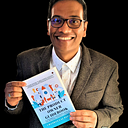The 7E Path: Navigating Leadership with Purpose and Resilience
Executive leadership is a demanding role, full of complex challenges that test even the most seasoned individuals.
For leaders at the helm, the balance between personal sacrifice, emotional strain, and the drive to deliver exceptional results is a constant battle.
Yet, there is a way to navigate these hurdles with purpose and clarity, and that way is through the 7E Leadership Framework.
This framework — comprising Ethics, Envisioning, Endurance, Excellence, Encouragement, Enablement, and Effectiveness — offers leaders a clear path through these struggles, helping them lead with intention and resilience.
When a leader faces role confusion, uncertain about whether to prioritize shareholders, employees, or customers, the framework provides a moral compass.
Ethics is the foundation that guides their decisions.
By grounding themselves in a strong ethical core, leaders can make decisions that reflect fairness, transparency, and trust. This clarity allows them to prioritize effectively, eliminating the ambiguity that often clouds their judgment. As they navigate the conflicting needs of various stakeholders, their ethical standards serve as the framework’s anchor, ensuring they remain true to their values while satisfying diverse interests.
At the same time, the vision of a leader becomes paramount.
Often, overburdened by the operational demands and day-to-day minutiae of running an organization, a leader may feel disconnected from the bigger picture. Yet, the power of Envisioning cannot be overstated. It’s what enables a leader to rise above the chaos of daily operations and see a path forward.
With a clear vision, they align their team and organization toward a shared goal, creating cohesion even in the face of challenges. A strong vision isn’t just about having a direction; it’s about inspiring others to walk that path with passion and commitment, ensuring that every decision, no matter how small, contributes to the larger purpose.
But envisioning is just one part of the journey.
The path of leadership is filled with obstacles that test one’s resolve, and to overcome them, leaders need Endurance.
The weight of the job, the emotional strain, and the isolation often leave leaders feeling vulnerable. Yet, it’s through endurance that they tap into their inner strength. They learn to persevere, drawing on the resilience built through personal sacrifices and the understanding that they must be the calm in the storm. Their endurance not only sustains them but also sets an example for those they lead, proving that even in the toughest times, it’s possible to stay steady and focused.
The demand for results is constant. In the corporate world, high expectations lead to high pressures, and leaders are often judged not by the journey they’ve taken but by the outcomes they’ve achieved.
Excellence is the quality that allows leaders to not just meet but exceed expectations.
It’s the commitment to doing the best work possible, in every situation.
Excellence means consistently delivering results, whether in quick decision-making or long-term strategic planning. It ensures that leaders, even under immense pressure, maintain high standards in every decision they make, showing their teams that it’s possible to achieve great things with dedication and focus.
Yet, in the midst of the pressure, leadership can often feel isolating. The demands are intense, and support can sometimes feel out of reach.
That’s when Encouragement becomes essential.
A leader cannot succeed alone; they need the support of their team and their network. Encouragement isn’t just about offering words of affirmation — it’s about creating a culture where everyone feels valued, supported, and empowered to contribute their best. When leaders encourage those around them, they create an environment where resilience flourishes, and collaboration thrives. It’s the encouragement that fuels not only their own journey but also the journeys of everyone they lead.
Leaders must also equip themselves to meet the demands of their role, which is why Enablement is so critical.
Continuous learning, growth, and adaptation are non-negotiable. As the business landscape evolves, so too must the leader. The framework’s emphasis on enablement helps leaders stay agile, equipping them with the tools, skills, and support necessary to thrive. Whether it’s through mentorship, professional development, or simply learning from experience, enablement gives leaders the confidence and capability to navigate the unknown with clarity and purpose.
Finally, all of these elements come together in the form of Effectiveness.
The true test of leadership is whether a leader can deliver tangible results, turning vision into reality.
Effectiveness is the culmination of all the framework’s principles, where resilience, focus, and strategic decision-making intersect.
A leader who is effective can take all the lessons they’ve learned — through ethics, endurance, excellence, encouragement, and enablement — and apply them to create real-world success. They understand that leadership isn’t just about making decisions; it’s about making the right decisions that move the organization forward and drive it toward meaningful, sustainable growth.
In the end, the 7E Leadership Framework isn’t just a set of principles — it’s a way of life for executive leaders.
By embracing these core elements, they can rise to meet the challenges they face with confidence, resilience, and clarity.
They can transform their leadership journey from one of struggle into one of purpose and impact, creating lasting change not only for their organizations but for themselves and those they lead.
